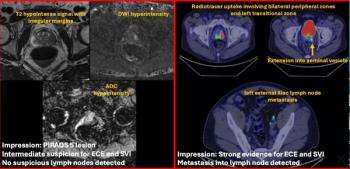FDA Clears New PET/CT Scanner from Siemens Healthineers
The Biograph Vision.X positron emission tomography/computed tomography (PET/CT) reportedly offers an industry-leading time of flight (TOF) and detector technology that facilitates the diagnosis of smaller lesions.
Offering an array of technological advantages with positron emission tomography/computed tomography (PET/CT), the Biograph Vision.X™ system has garnered 510(k) clearance from the Food and Drug Administration (FDA).
The Biograph Vision.X features a time of flight (TOF) of 178 picoseconds and Optiso Ultra Dynamic Range (UDR) detector technology, according to Siemens Healthineers, the manufacturer of the device. Utilizing 3.2 x 3.2 mm lutetium oxyorthosilicate (LSO) crystal elements that provide enhanced spatial resolution in comparison to larger crystals, the company noted the UDR technology enables 48 mm3 volumetric resolution and temporal resolution of 178 ps.
“The Biograph Vision.X’s record-shattering, ultrafast time of flight delivers an image resolution that allows even the smallest lesions to rise above the noise,” said James Williams, Ph.D., the head of Siemens Healthineers Molecular Imaging. “This extremely high level of resolution can help physicians detect small lesions and provide patients with a precise diagnosis.”
In order to optimize radiology workflow, Siemens Healthineers said the system’s built-in AIDAN intelligent imaging platform has a foundation of over 700 patents in machine learning and deep learning applications. The company added that the optional FlowMotion™ AI feature for the Biograph Vision.X device enables clinicians to personalize image acquisition with one click via a combination of anatomical AI and continuous bed motion.
Newsletter
Stay at the forefront of radiology with the Diagnostic Imaging newsletter, delivering the latest news, clinical insights, and imaging advancements for today’s radiologists.





























